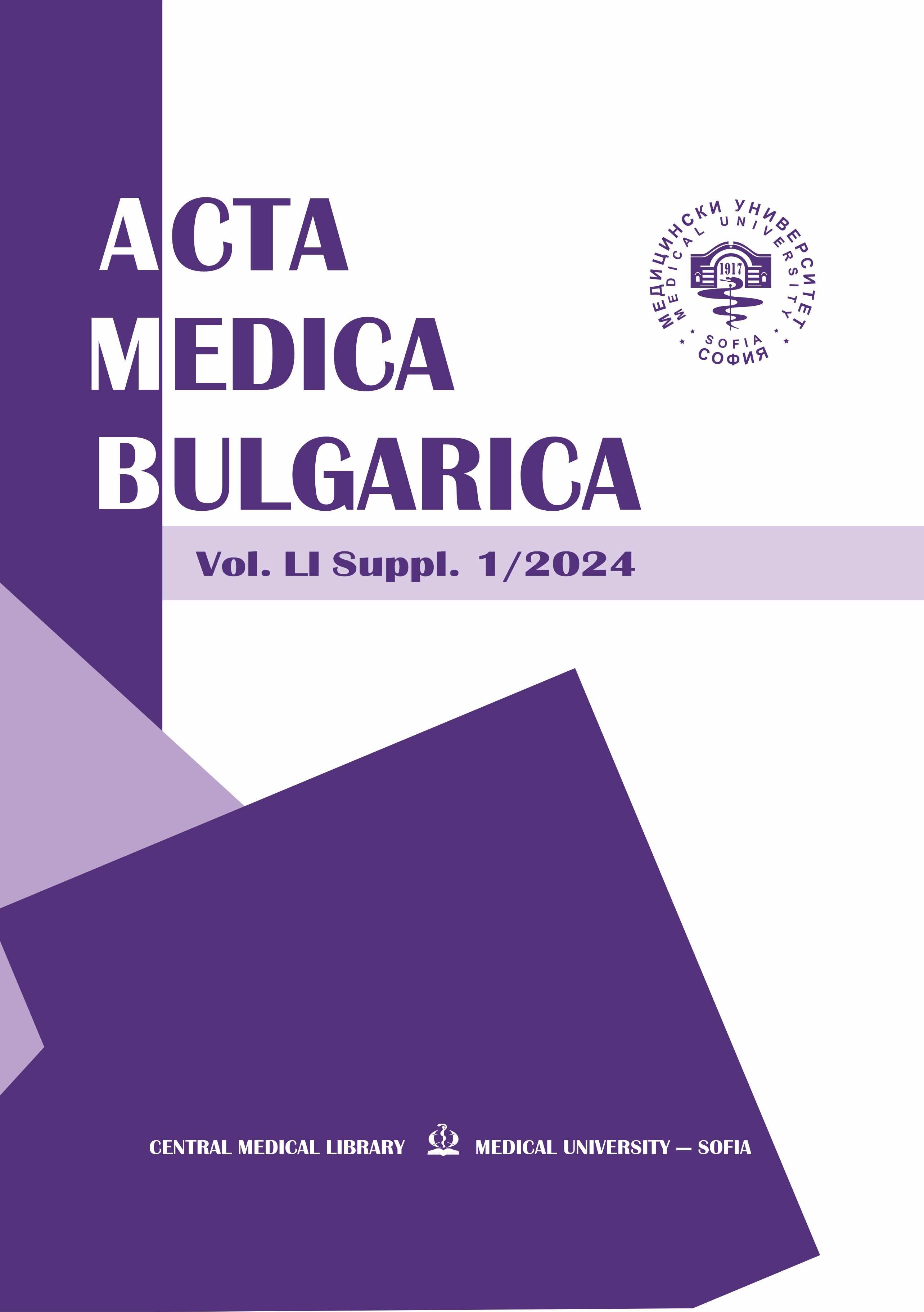Fracture into the abdominal cavity and the presence of a retroauricular pseudocyst are diagnostic of a partial ventriculoperitoneal shunt dysfunction
DOI:
https://doi.org/10.2478/AMB-2024-0030Keywords:
ventriculoperitoneal shunt fracture, ventriculoperitoneal shunt malfunction, cranium, abdominal cavity, complicationsAbstract
Ventriculoperitoneal shunt malfunction is frequently observed, with the ventriculoperitoneal shunt fracture being a prevalent etiology. The occurrence of ventriculoperitoneal shunt malfunction is approximately 40% in the first year after implantation and increases to 50% in the second year. Ventriculoperitoneal shunt fracture accounts for 15% of total ventriculoperitoneal shunt malfunction incidents. Ventriculoperitoneal shunt fractures commonly occur due to calcification, immune reactions, and abrasions. The report describes a 5-year-old child who exhibited ventriculoperitoneal shunt malfunction based on clinical examination and CT scan findings. The patient presented with fever and pain in the postoperative wound located posteriorly to the left ear. Radiographic imaging of the cranium and thoracoabdominal region revealed the presence of a ventriculoperitoneal shunt fracture and a C5 spinal disconnection. Additionally, it was demonstrated that the distal catheter had relocated to the abdominal cavity. The laboratory examination and cerebrospinal fluid analysis yielded normal results. The fractured ventriculoperitoneal shunt was subsequently removed and replaced with a new one. It is important to thoroughly investigate and comprehend ventriculoperitoneal shunt malfunctions, even during routine follow-ups.
References
Park MK, Kim M, Park KS, et al. A Retrospective Analysis of Ventriculoperitoneal Shunt Revision Cases of a Single Institute. J Korean Neurosurg Soc, May 2015, 57(5), 359-363. doi: 10.3340/jkns.2015.57.5.359.
Erol FS, Ozturk S, Akgun B, Kaplan M. Ventriculoperitoneal shunt malfunction caused by fractures and disconnections
over 10 years of follow-up. Childs Nerv Syst, Mar. 2017, 33(3), 475-481. doi: 10.1007/s00381-017-3342-0.
Jibia A, Oumarou BN, Adoum M, et al. Repeat fracture of shunts in ventriculoperitoneal shunting with pelvic migration: An African teen case report with literature review. Interdiscip. Neurosurg, 2022, 27(101381). doi: 10.1016/j. inat.2021.101381.
Jadhav SS, Dhok A, Mitra K, et al. Dandy-Walker Malformation With Hydrocephalus: Diagnosis and Its Treatment. Cureus, May 2022, doi: 10.7759/cureus.25287.
Mohanty A, Biswas A, Satish S, et al. Treatment options for Dandy-Walker malformation. J Neurosurg, Nov. 2006, 105(5
Suppl), 348-356. doi: 10.3171/ped.2006.105.5.348.
Yim SB, Chung YG, Won YS. Delayed Abdominal Pseudocyst after Ventriculoperitoneal Shunt Surgery: A Case Report. The Nerve, Oct. 2018, 4(2), 111-114. doi: 10.21129/nerve.2018.4.2.111.
Isaacs AM, et al. Age-specific global epidemiology of hydrocephalus: Systematic review, metanalysis and global
birth surveillance. PloS One, 2018, 13(10), e0204926, doi: 10.1371/journal.pone.0204926.
Mansoor N, Solheim O, Fredriksli OA, Gulati S. Shunt complications and revisions in children: A retrospective single institution study. Brain Behav, Nov. 2021, 11(11), e2390. doi: 10.1002/brb3.2390.
Broggi M, et al. Diagnosis of Ventriculoperitoneal Shunt Malfunction: A Practical Algorithm. World Neurosurg. May 2020,
, e479-e486. doi: 10.1016/j.wneu.2020.02.003.
Pinto FCG, de Oliveira MF. Laparoscopy for ventriculoperitoneal shunt implantation and revision surgery. World J Gastrointest Endosc, 2014, 6(9), 415-418. doi: 10.4253/wjge.v6.i9.415.
Kang JK, Lee IW. Long-term follow-up of shunting therapy. Childs Nerv Syst, Nov. 1999, 15(11-12), 711-717. doi:
1007/s003810050460.
Kaplan M, Cakin H, Ozdemir N, et al. Is the elapsed time following the placement of a ventriculoperitoneal shunt catheter
an individual risk factor for shunt fractures? Pediatr Neurosurg, 2012, 48(6), 348-351, doi: 10.1159/000353616.
Bokhari I, Rehman L, Hassan S, Hashim MS. Dandy-Walker Malformation: A Clinical and Surgical Outcome Analysis. J Coll Physicians Surg-Pak JCPSP, 2015, 25(6), 431-433.
Hamdan AR. Ventriculoperitoneal shunt complications: a local study at Qena University Hospital: a retrospective study.
Egypt J Neurosurg, 2018, 33(1), 8. doi: 10.1186/s41984-018-0008-5.
Zahedi S, et al.Investigation of ventriculoperitoneal shunt disconnection for hydrocephalus treatment. J Neurosurg Pediatr, Feb. 2021, 27(2), 125-130, doi: 10.3171/2020.6.PEDS20454.
Aldrich EF, Harmann P. Disconnection as a cause of ventriculoperitoneal shunt malfunction in multicomponent shunt systems. Pediatr Neurosurg, 1991 1990, 16(6), 309-311; discussion 312. doi: 10.1159/000120549.
de Oliveira R S, Barbosa A, de M Y. A. et al. An alternative approach for management of abdominal cerebrospinal fluid
pseudocysts in children. Childs Nerv. Syst. ChNS Off. J Int Soc Pediatr Neurosurg, 2007, 23(1), 85-90, doi: 10.1007/
s00381-006-0183-7.
Patwardhan RV, Nanda A. Implanted ventricular shunts in the United States: the billion-dollar-a-year cost of hydrocephalus treatment. Neurosurgery, 2005, 56(1), 139-144; discussion 144-145, doi: 10.1227/01.neu.0000146206.40375.41.
Tuli S, Drake J, Lawless J, et al. Risk factors for repeated cerebrospinal shunt failures in pediatric patients with hydrocephalus. J Neurosurg, 2000, 92(1), 31-38. doi: 10.3171/jns.2000.92.1.0031.
Downloads
Published
Issue
Section
License
Copyright (c) 2024 F. Balafif, O. Wibobo, T.A. Nazvar, D.W. Wardhana (Author)

This work is licensed under a Creative Commons Attribution-NonCommercial-NoDerivatives 4.0 International License.
You are free to share, copy and redistribute the material in any medium or format under these terms.


 Journal Acta Medica Bulgarica
Journal Acta Medica Bulgarica 